I am always looking for the best mouse trap available. Hunting costs a good bit of money and takes a considerable investment of time; I never want my gear to hold me back.
When handgun hunting, I am generally hunting in the remote areas of Wyoming in various terrain; from forested mountains to grassy plains. I have also spent a large part of my life hunting the east coast in the oak flats and river bottoms. With the exception of the plains, you will often times have some tracking to do after a shot to locate your animal. Even a short 25-50 yard track can be difficult in thick cover. With that said, I want a blood trail, I want good wound channels, and I want an instant reaction of the animal to being hit. With the only exception being large buffalo/bison or similar critters, I want a bullet designed to make a wound channel much larger than bore diameter and that delivers its energy well to the game.
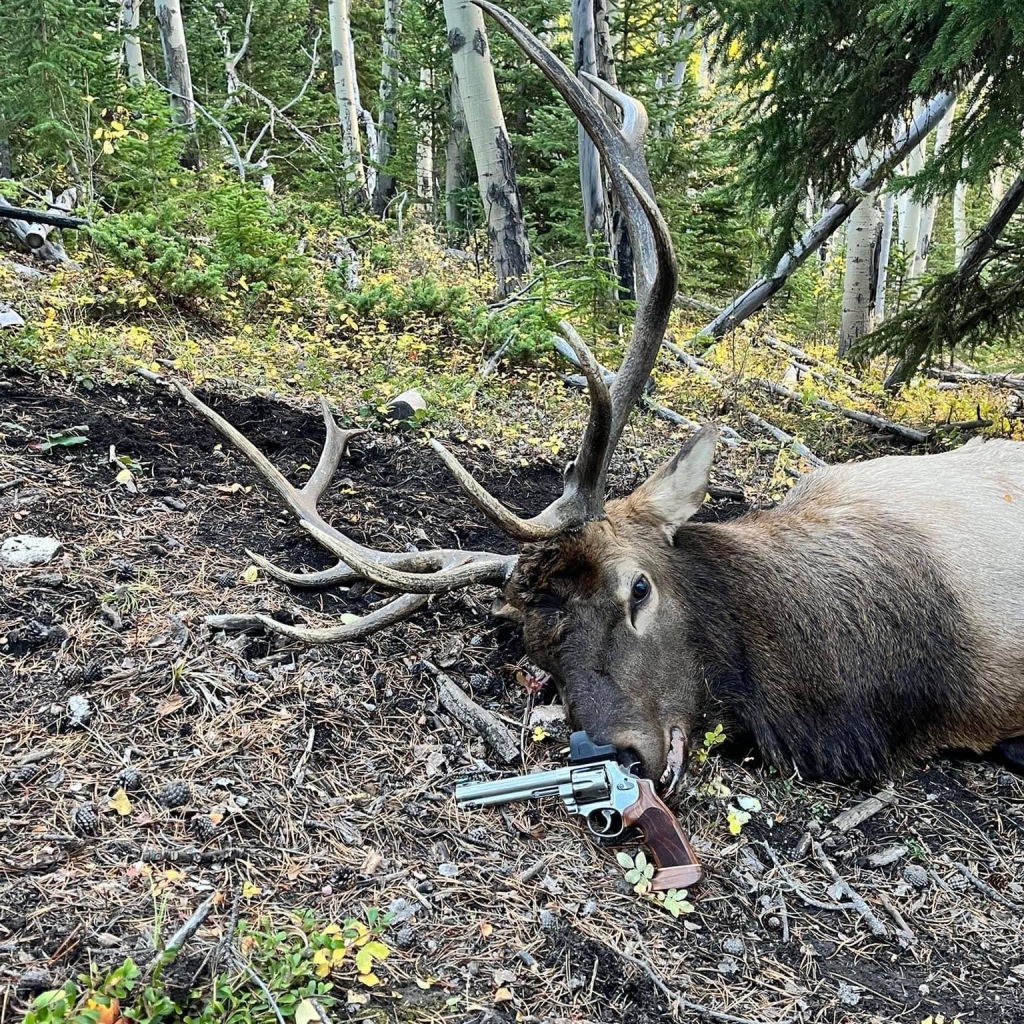
I pursue all manors of game with a handgun with the most common animal targeted being elk here in Wyoming. I have been fortunate to be successful with multiple types of projectiles, multiple handgun cartridges, and at ranges from up close to what most would think is only possible with a rifle.
I have had some less than desirable results over the years with multiple types of projectiles and that is what lead to me wanting to do this multi year study.
Now that I have given us some back ground, let’s talk about how a bullet works to take game. I am not a ballistician (engineer of ballistics) so I’m going to explain this in terms that I understand and hopefully you will too.
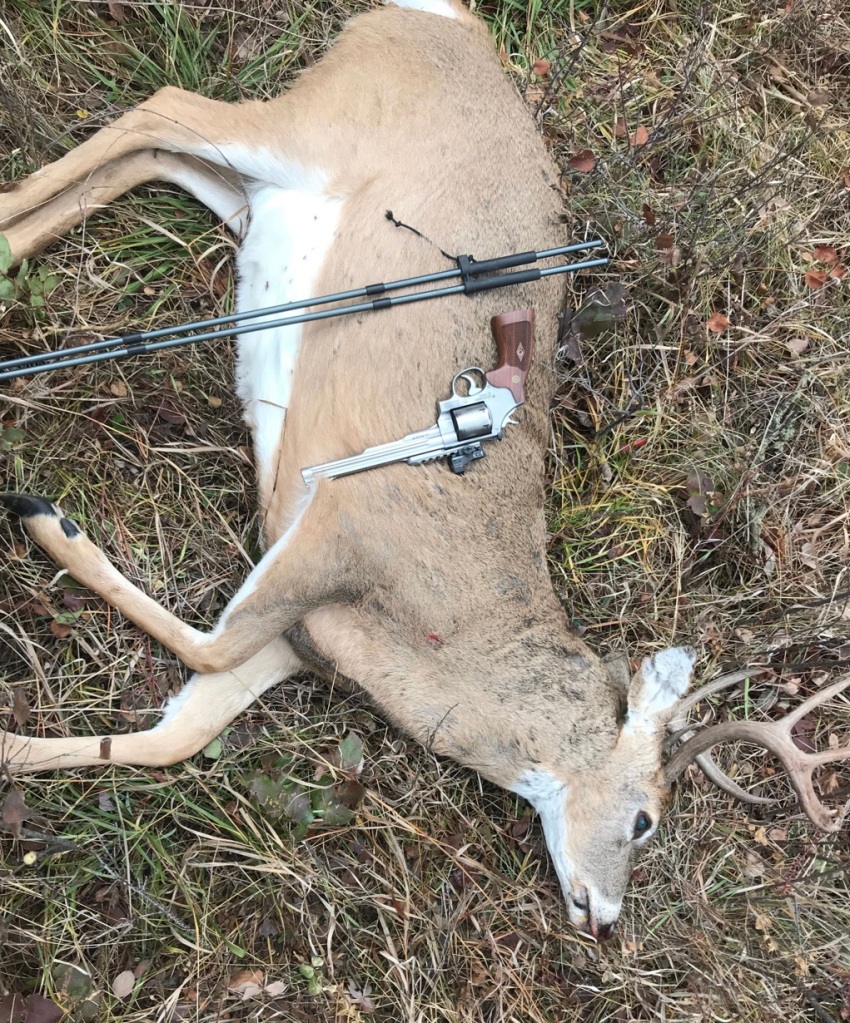
When a bullet strikes a live animal, the force is applied to the animal in a similar way as a parachute slows a sky diver. When a parachute is deployed, it increases the air resistance slowing the sky diver. The sky diver can feel the “slamming on the brakes” feeling in his parachute harness. Similarly when a bullet strikes an animal the frontal face (meplat) of the bullet causes drag within the animal tissue just like a parachute. The larger the diameter of the bullet’s frontal area, the more drag and thus the more energy is transferred. With that in mind you can visualize how an expanding bullet is going to deliver more energy to the target than a non expanding.

Going into this experiment I had taken game with a handgun using lead and jacketed lead core hollow points for over 20 years. I also have received feedback from customers that I built handguns for using various bullets. All of that knowledge was used in my experiments going forward.
The first step in this process was acquiring projectiles. I wanted there to be zero bias in this review so I purchased all of these bullets out of my pocket. I spent several thousand dollars on projectiles from every mono metal bullet maker I could find; don’t forget the other components.
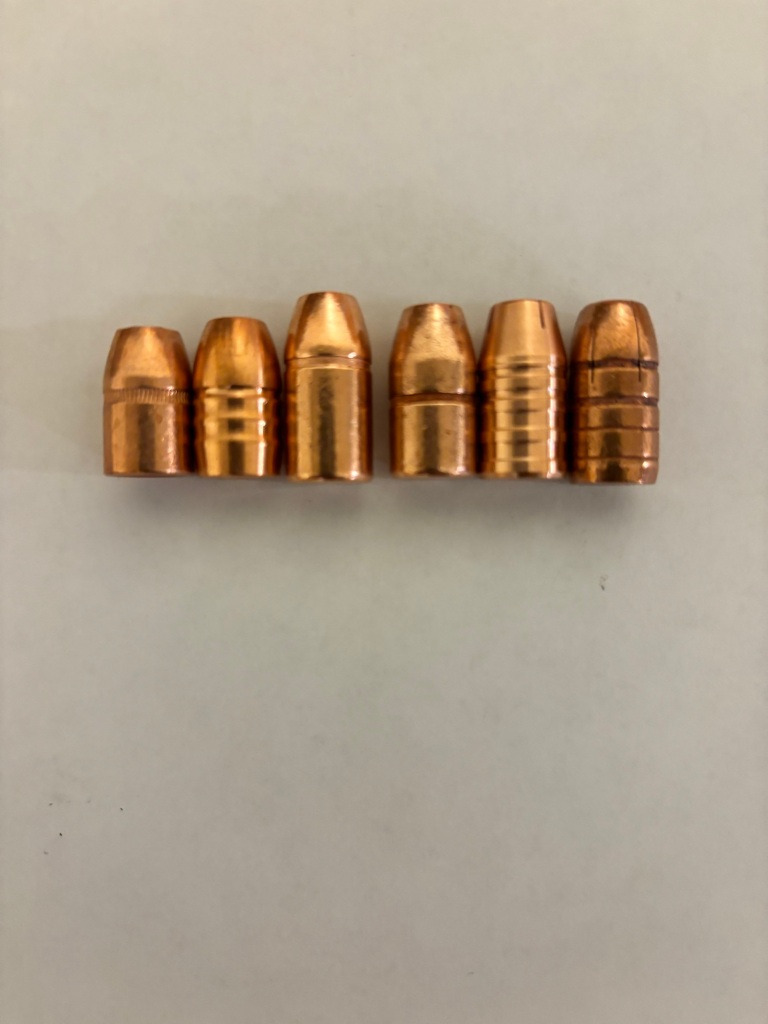
When you first start looking at mono metal bullets you will notice they are lighter and longer than your lead core bullets. This is due to the fact that copper is much lighter than lead.
Using the age old energy formula of mass x velocity = energy we know that we are going to have to increase our velocity to make up for the lost mass due to the lighter material.
My hypothesis was: If I can increase velocity to offset bullet mass loss the terminal performance of the projectiles will be the same.
Now, when we first read that hypothesis we think that just means cram more powder in the case and hold on, well that’s partially correct. The longer projectiles take up more room in the cases so we have to deviate from our primary magnum powders. We need to go a few steps faster on the burn chart.
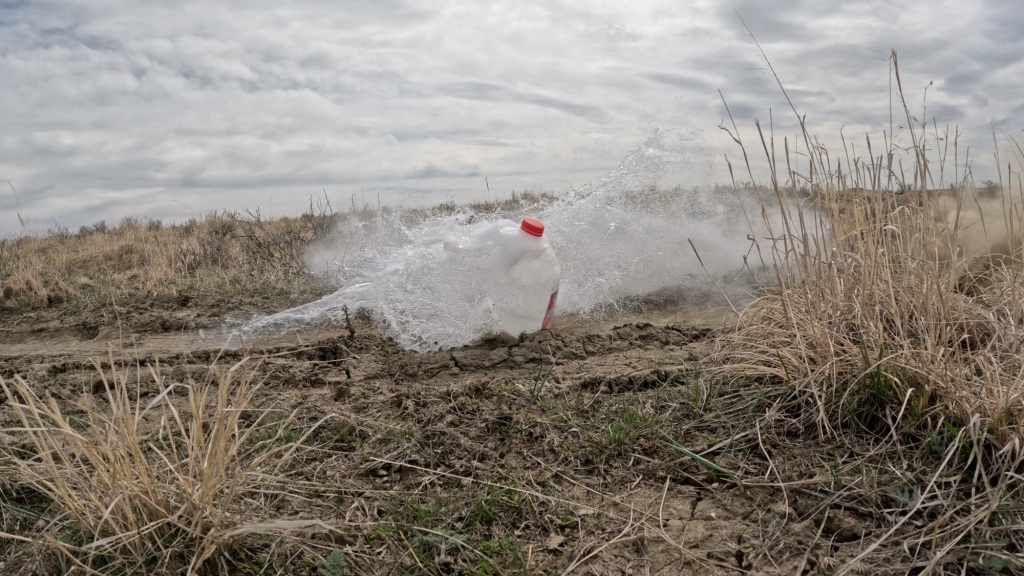
The first experiments took place with a mono metal classic, Barnes Bullets. Barnes has a good history in the mono metal world with their bullets taking game all over the world. There was no better place to start. For the majority of my testing I focused on the 44 magnum since it is the most commonly used handgun hunting cartridge and capable of taking all North American game.
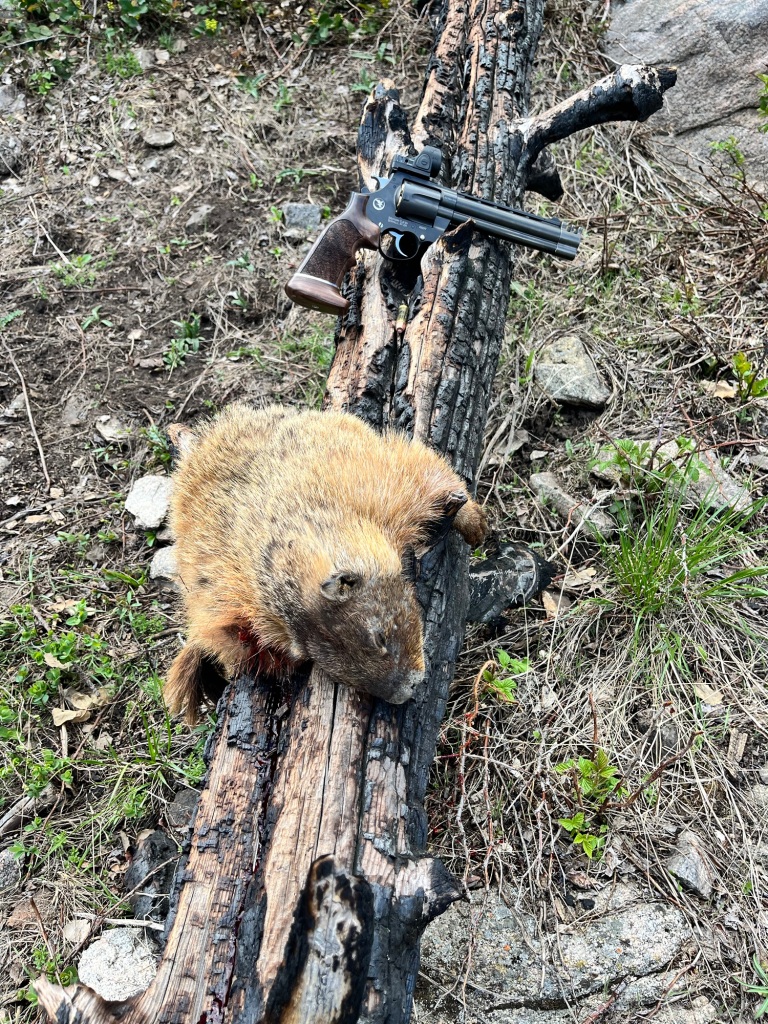
In the initial loadings I started with the 225 XPB which are about the same length as a 300 grain cup and core bullet. I had trouble obtaining velocity with these projectiles due to the amount of powder capacity being burned up by the bullet length. I eventually had a break through with Accurate Arms #9. AA9 is a well proven magnum powder that is faster burning than some of the more popular magnum handgun powders. AA9 allowed me to achieve 1250 fps from a 6.5” S&W 29DX and we were off to test it on critters.
That first year I took elk, deer, and antelope with the Barnes 225 XPB. Accuracy was always on par with the lead core jacketed bullets but something was missing. When these bullets would strike tissue they expanded well, too well. Their petals would largely stay straight out 90 degrees to the shank of the bullet. With the lighter weight and the very large front area penetration was often lacking. On multiple cow elk penetration was around the 50% mark or center of the chest cavity.
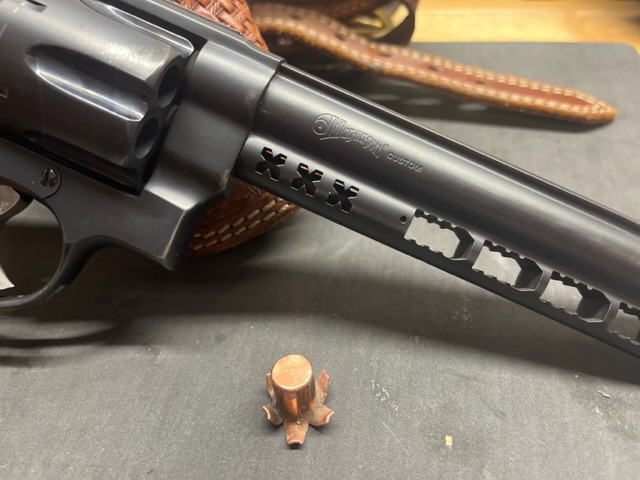
The other problem was the operating velocity window. When I was in under 50 yards I would get performance similar to the above picture. As the range increased slightly expansion would decrease rapidly. At 100 yards I’d see little if any deformation and the bullet would pass through the animal leaving caliber sized exit holes and little damage around the wound channel; similar to a LSWC.
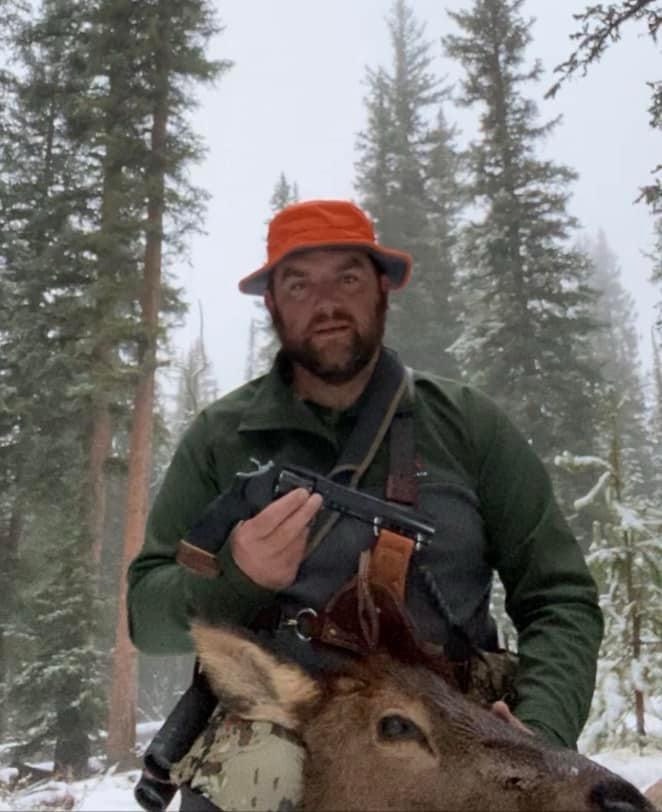
The next year I used the 200 XPB which increased my velocity and did improve terminal performance some but I was still having a lack of penetration on elk sized animals that a lead core jacketed bullet would have exited. I was able to exceed 1500 fps with the 200 XPB.
Over the next year I started trying other brands of bullets. This is where I started to loose hope. I experienced failures from major bullet companies. One of which I even contacted and they admitted to not even testing them. I had companies that were more than happy to sell me projectiles but wouldn’t take the time to answer the questions I had.
Then I stumbled upon another brand, Cutting Edge Bullets. I ordered a few hundred dollars worth of their 200 grain Handgun Raptor. If you have ever researched Cutting Edge a little you will quickly find out that literally everyone winning or placing well at the extreme long range rifle events is shooting their bullets; which should remove any worries about accuracy.
When I started loading the CE bullets I first tried loading them with H110 and other common magnum powders and I would get some really anemic puff gun loads. Apparently their bullets have reduced bore drag and don’t build pressure as rapidly as traditional bullets or even the Barnes. So after a bit of pondering I went back through my notes and lessons learned. I started experimenting with AA9 and Enforcer powders. As with all magnum handgun chamberings I have found the following steps to be key for obtaining an accurate load, and they apply to the CE as well.
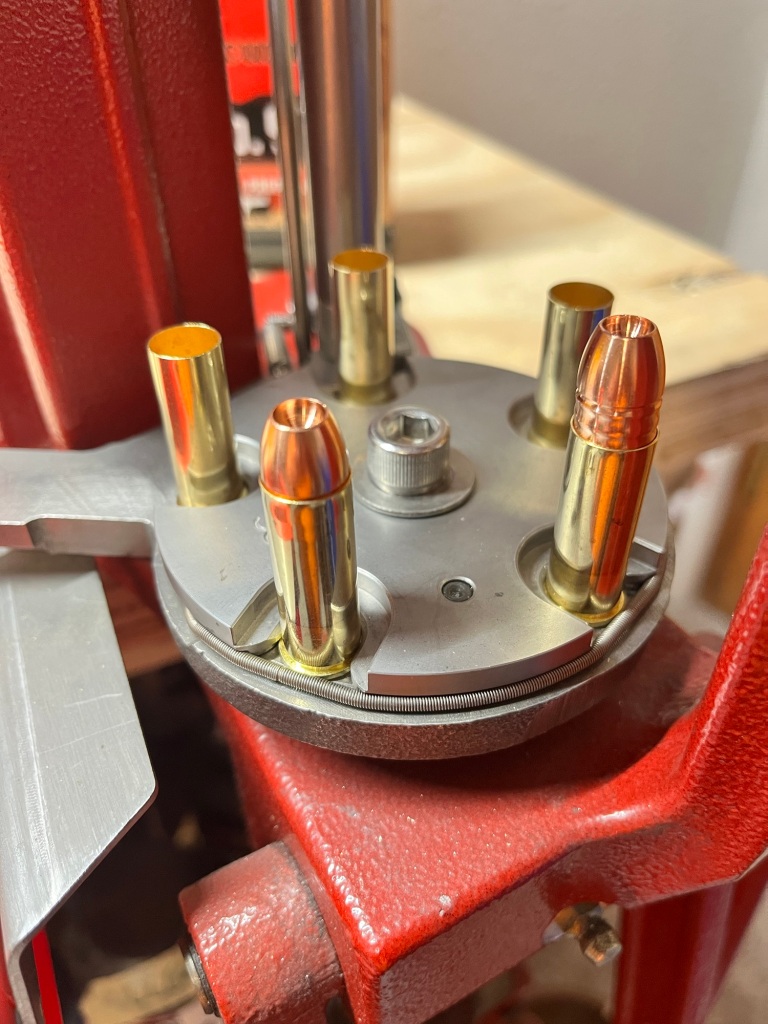
1. Minimum case flare. Don’t over expand the case mouth. Just enough so the bullet enters.
2. Select a powder charge that touches the base of the bullet but is not overly compressed.
3. Just enough crimp to hold the bullet and prevent bullet jump. Too much crimp can damage the bullet.
The CE bullets are different in the way they build pressure. I found magnum primers to be a must for top velocity. As you recall from our initial hypothesis we need to gain velocity to make up for lost mass. The magnum primers will help to get the powder burning more rapidly and build the pressure thus increasing velocity.
When loading the CE bullets I start with load data found in the loading manuals for the same weight projectile that are lead core. I work up a load starting at the bottom of the manual recommended charge until I start getting signs of pressure and then back off. Examples of high pressure are but not limited to sticky extraction, flattened primers, and so on. I am generally around 80% of book max for a lead core jacketed bullet with the CE. In multiple revolvers to include Korth, S&W 629, S&W 629 PC, and a S&W 29DX I was able to achieve 1570-1600 fps. With a Ruger only load of AA7 in a 7.5” BFR I was able to obtain 1900 fps which gave me an insanely flat trajectory to 200 yards. Overall Cutting Edge was the fastest bullet in multiple cartridges for a mono metal which we knew was going to be required by our hypothesis.
The year I worked up the loads with the Cutting Edge 200 Handgun Raptor we hit a small snag. I ruptured my bicep right before season opened and was in need of emergency surgery. But as luck would have it I had one day prior to surgery and one zone open for whitetail does. My wife and I waited on a field edge that night and I had one goal. I wanted to see what these bullets would do at their minimum expansion velocity.
Cutting Edge bullets are not expanding bullets. CE are fracturing bullets. In terms I understand fracturing means that the bullets separate at pre determined points once they come into contact with tissue. On the handgun bullets 4 large pre cut petals are plainly visible.
How fracturing works in terms of killing game using our parachute example from before is: when the bullet strikes the animal the petals expand rapidly to 90 degrees and the “parachute” is deployed dumping energy into the animal. The petals then shear off and the “parachute” is cut away and the base of the bullet continues to pass through with its resistance lessened. This will allow for a better blood trail due to the exit. While the base is passing through the animal the petals that separated are radiating out away from the wound channel.
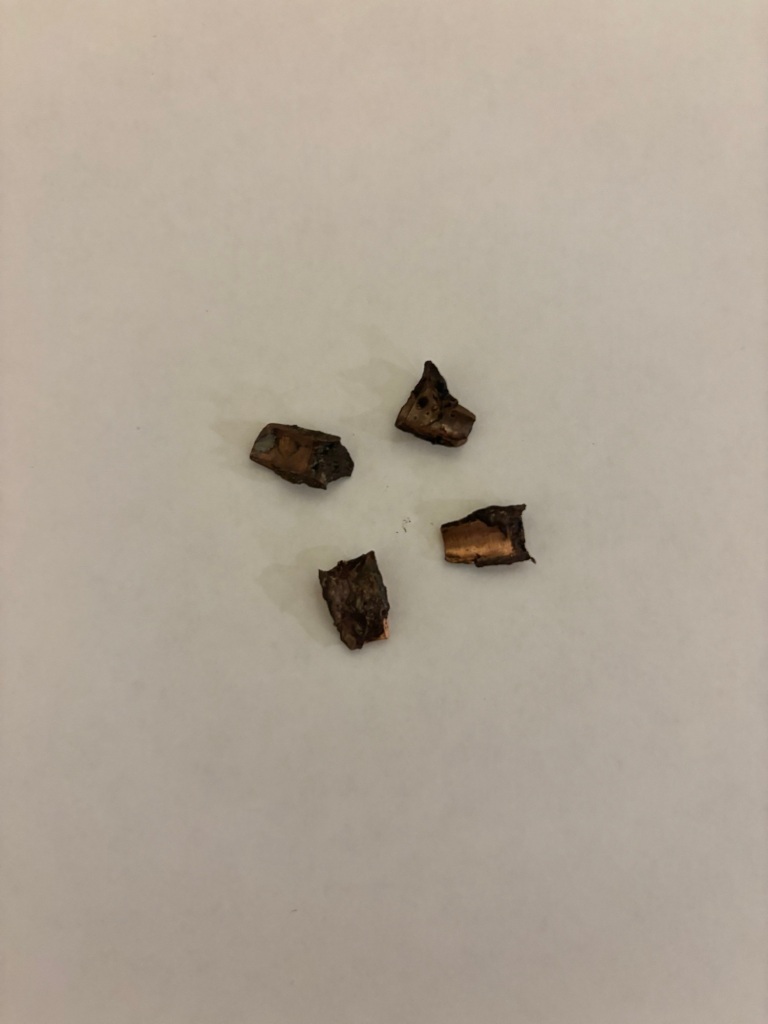
So now let’s get back to our first deer hunt with a busted up arm. I am laying prone on the edge of a hay field and two young does wander out. My BFR was equipped with a 4 power Leupold Handgun Scope with a Custom CDS turret I had made for these projectiles. A shot I had practiced all summer long appeared, a shot that I had taken numerous rock chucks with, the first doe stopped and turned broad side at 189 yards. I dialed my optic and hit her twice in rapid succession and she fell in the field. The other doe just stood there at 240 yards and I dialed the scope again and placed the shot on the doe’s shoulder and she ran in a short circle and laid down in the field. After a quick and physically painful skinning process being one handed and heading off to surgery the next day I had a glimmer of hope in my eyes for mono metal bullets.
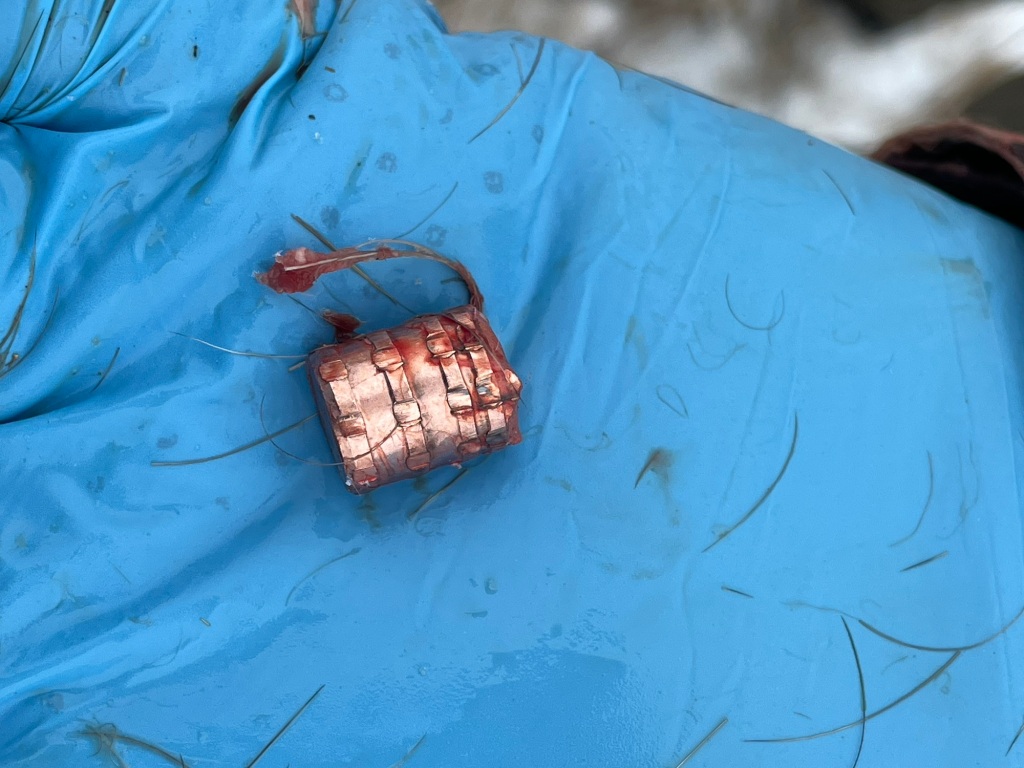
After my surgery and recovery with just a day or two to spare before the end of the season I took one more doe right at 100 yards with the same BFR. Now I was confident I had something to work with in the upcoming seasons.
The next season we hit one more snag, the great reloading shortage. I had ordered my Cutting Edge Bullets with what I thought was plenty of time but they didn’t make it until season had started. I was quite successful that season taking a bull elk, a few cow elk, and deer with multiple handguns. The CE had to wait.
In 2023 I was ready, I had bullets in hand, top shelf firearms ready to go, and I just retired from my gun shop and had plenty of free time.
I added a cartridge to the mix for 2023. I picked up a S&W 460 7.5” PC. I stoked this 460 full of AA9 and a 240 Handgun Raptor and began to put elk on the ground. Multiple elk were taken with that 460 with shots including shoulders, vitals, and frontal. The wound channels were impressive compared to animals I had taken years prior with a 460 and lead core jacketed hollow points; but who wouldn’t expect them to be more impressive, it’s a 460!
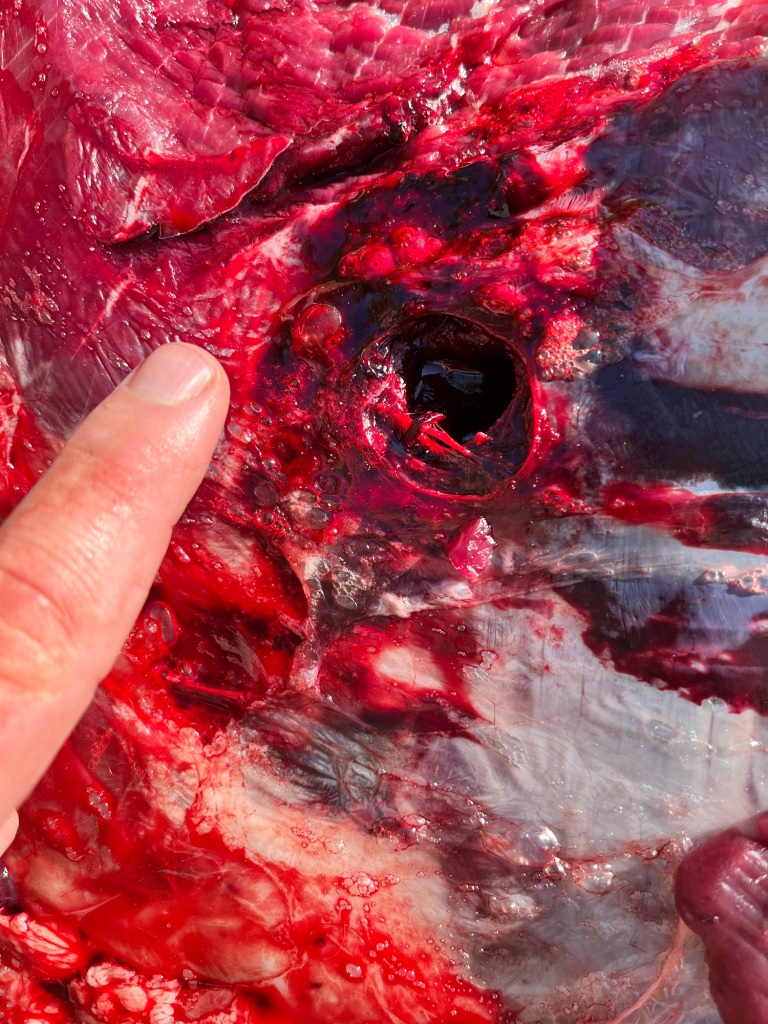
As season went on my wife dropped a cow elk where it stood with a S&W 629PC 44 mag with a 200 Handgun Raptor at about 60 yards and I took a calf which was about the size of a large mule deer at about 75 yards with a Korth and the same load. I also took a decent bodied mule deer with that Korth at about 60 yards with an impressive wound channel and blood trail.
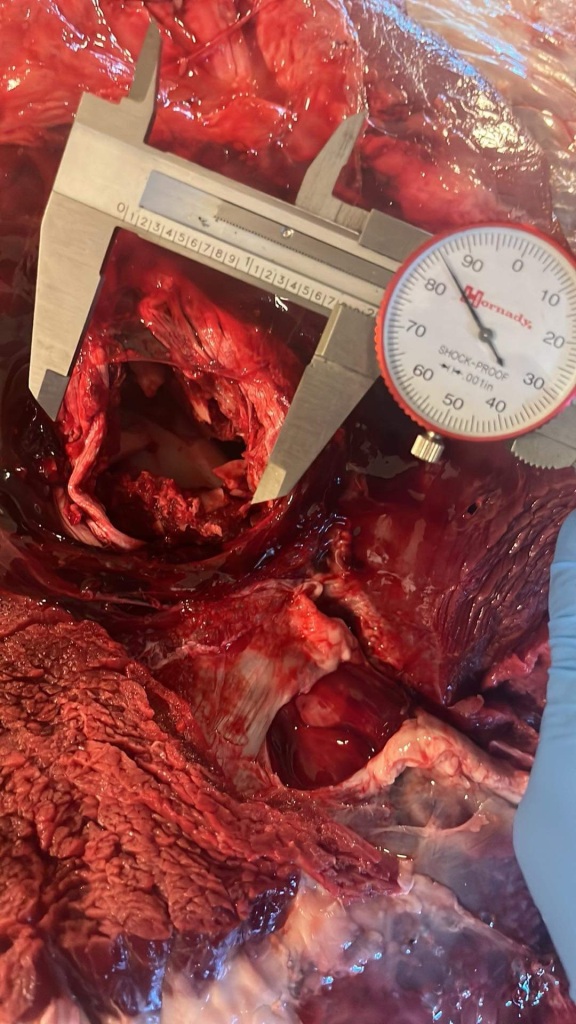
Hunting here in Wyoming almost all of my animals have to be packed out on my back. I don’t have the luxury of hanging and skinning them which makes the post shot wound channel discovery a little more difficult. But even with that something was starting to become apparent. Penetration was exceeding jacketed hollow point performance. I would rarely get a jacketed bullet to exit elk or mule deer and almost all of these CE bullets were exiting. The animals reaction to the hit was increasing and the time on their feet following the shot was decreasing.

My last elk of the season was a 220 yard cow elk with the 460 S&W and an Ultradot red dot. That one even got Cutting Edge’s attention.
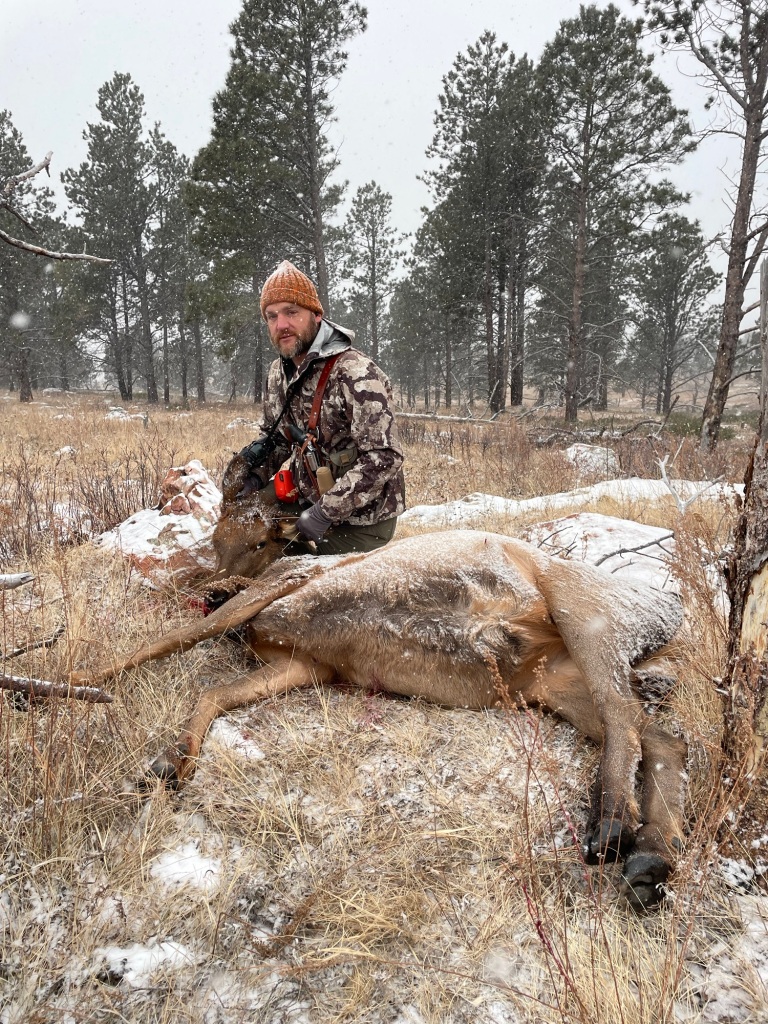
I had one last go to wrap up this review. I went on my first high fence hunt in Texas. This gave the perfect opportunity to wrap this up. I elected to use the smallest cartridge commonly accepted by handgun hunters with a bullet weight they would all scoff at. I worked up a handload with Enforcer powder, Federal small pistol magnum primer, Starline Brass, and a 105 CE Handgun Raptor. This bullet is traveling at over 1500 fps and is the same length as a 158 XTP.
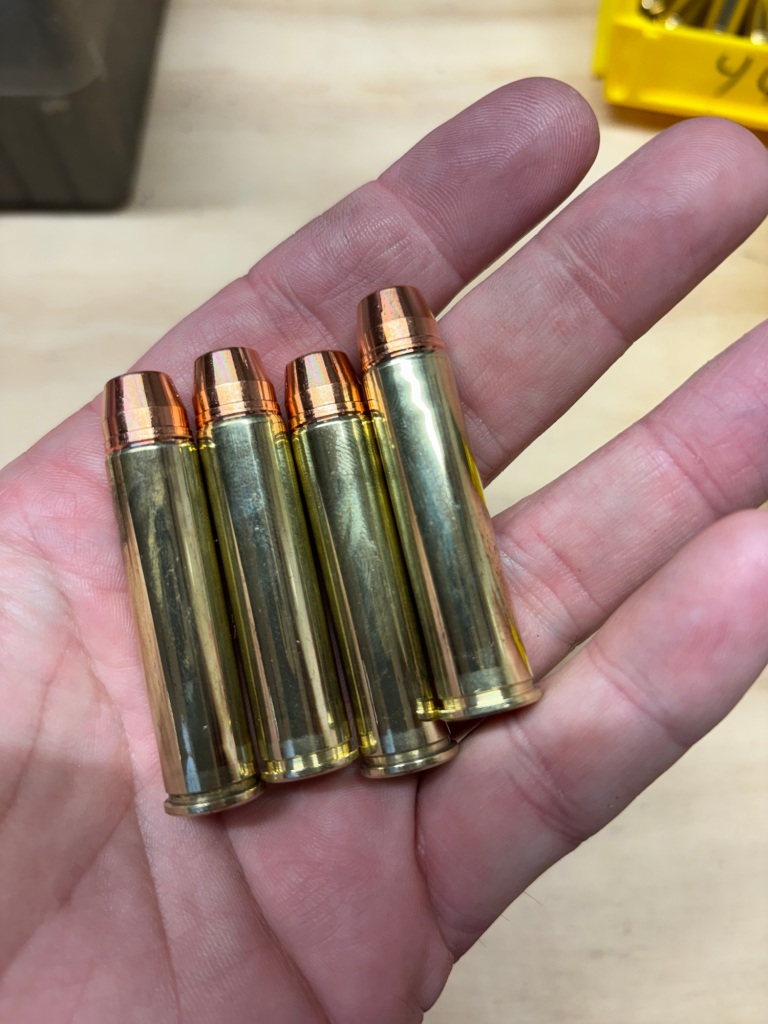
I had a theory based off the experience I had gained in short order with the Cutting Edge. I predicted or made a hypothesis that these 105 CE HR would not only exit all the animals on the target list but would put them down very quickly due to the way the fracturing bullets work. I predicted that they would exceed the performance of a 158 XTP which is a well proven 357 magnum hunting bullet.
I took four animals on this last hunt. A roughly 200 pound axis buck, axis doe, black buck, and a 200 pound ram.
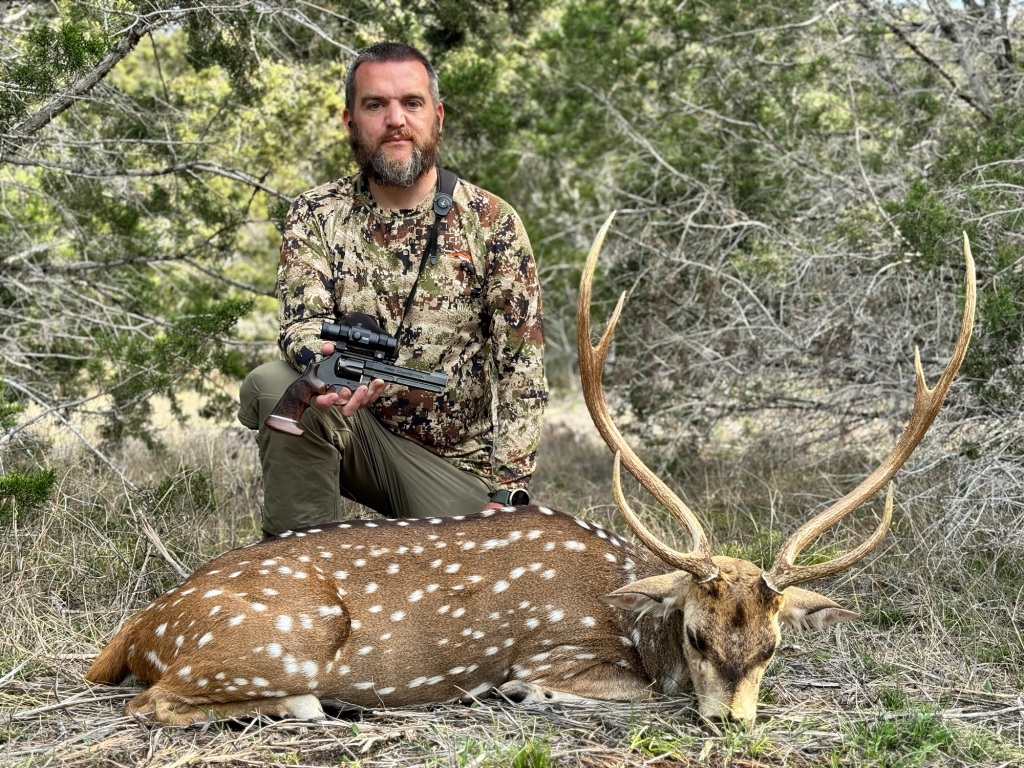
The black buck ran the farthest at roughly 70 yards. Everything else went down in 25 yards or less. The bullet base exited all but the axis buck. The bullet was stuck just under the off side hide on that axis.
On all of the animals the lungs had multiple holes where the petals from the CE had passed through.
With all the hunting I have done with a handgun over the years I rarely have a jacketed hollow point bullet exit an elk. All but a couple Cutting Edge bullets exited elk. The penetration of the 357 on the exotic game was also impressive.
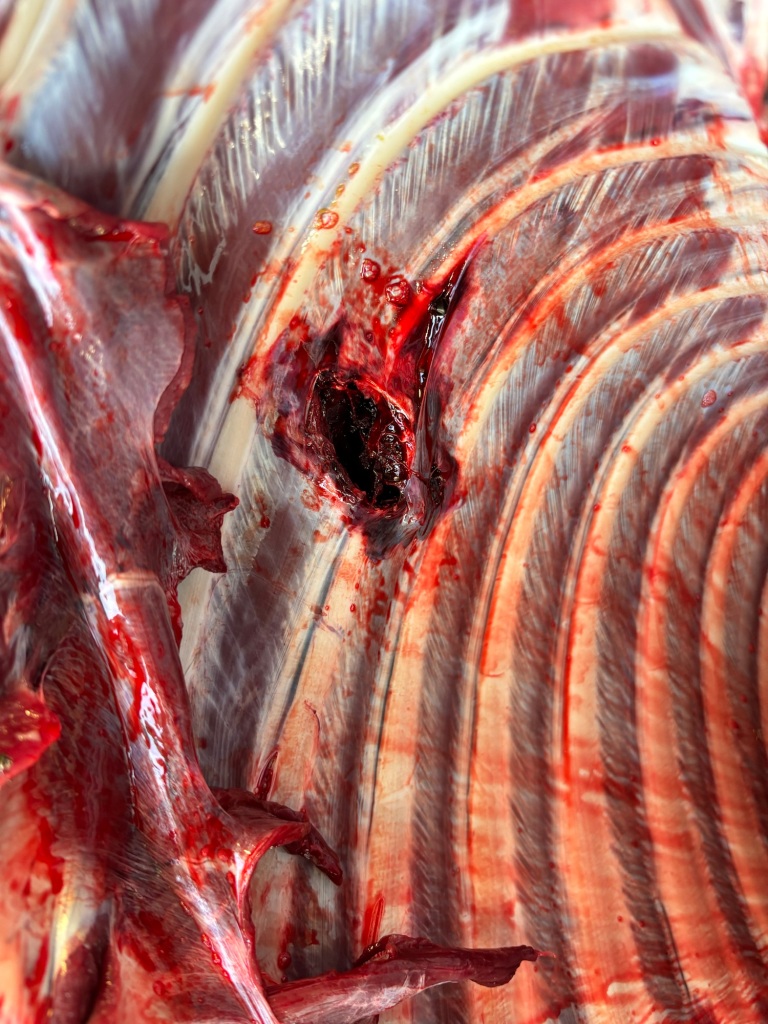
This was a long and expensive road to get to where I have confidence in a mono metal bullet. I experienced under performers, complete failures, and other difficulties along the way. I reckon we always save the best for last. Cutting Edge impressed me with their performance on game. The bullet is the final piece of the puzzle in a successful hunt, spending a little extra money to ensure success is well worth it.
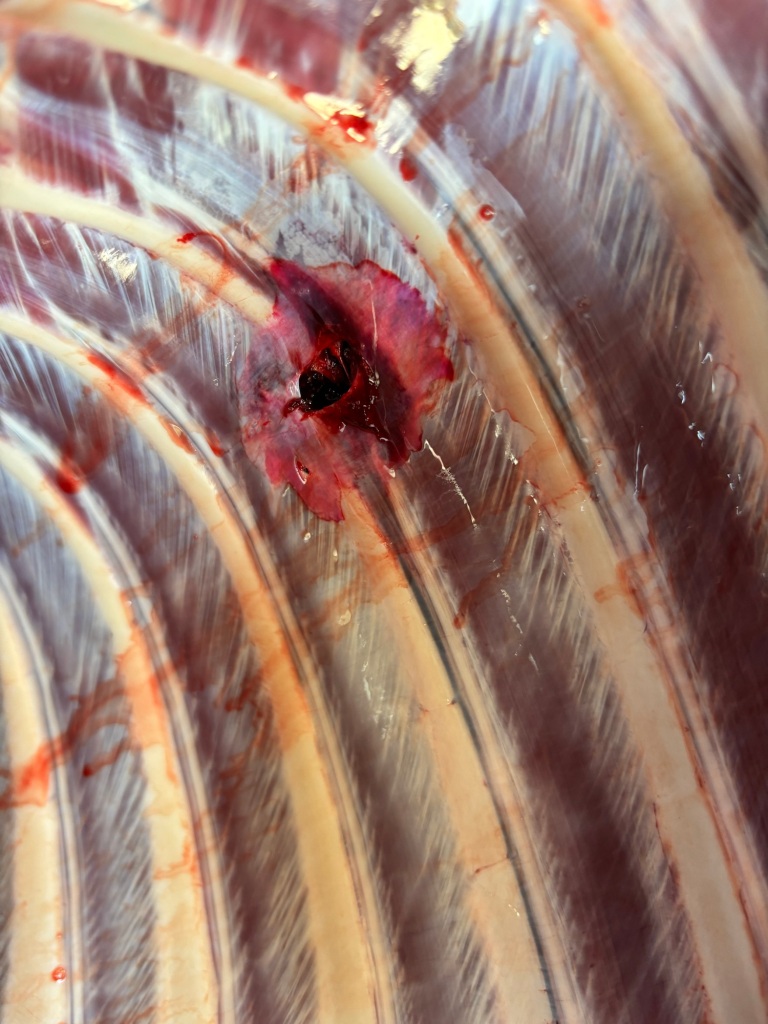
My hunts for big game will be with a Cutting Edge for the foreseeable future.
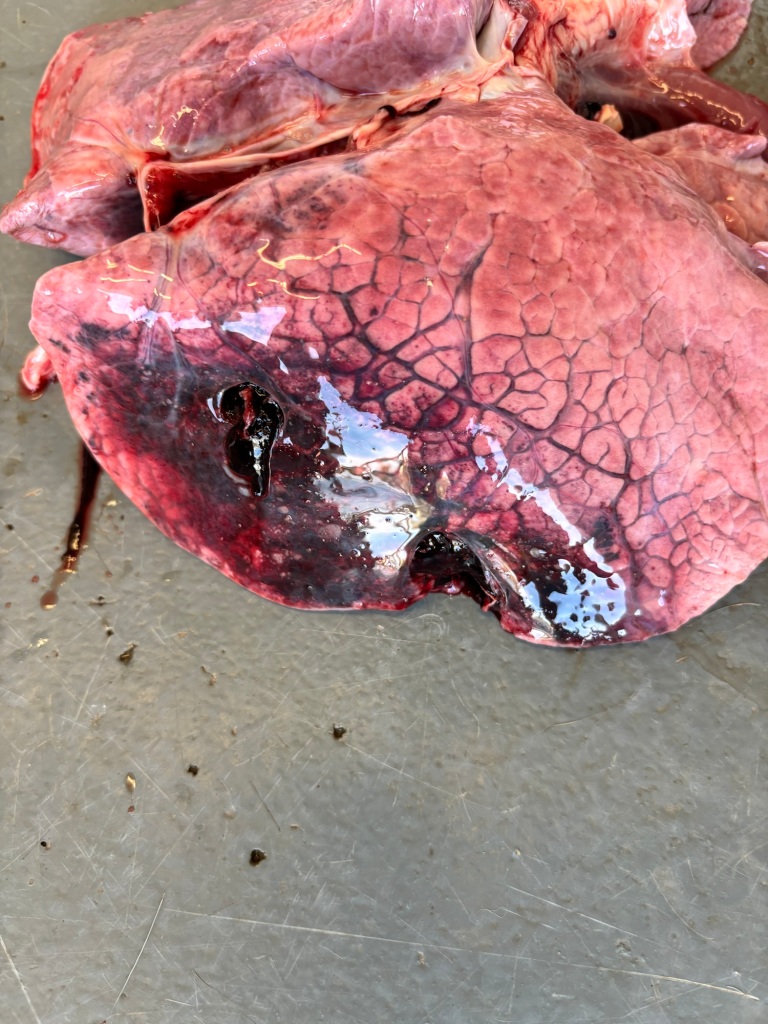
*This article is not paid for or sponsored by any manufacturer. All products were purchased by me with my own funds*



Leave a comment